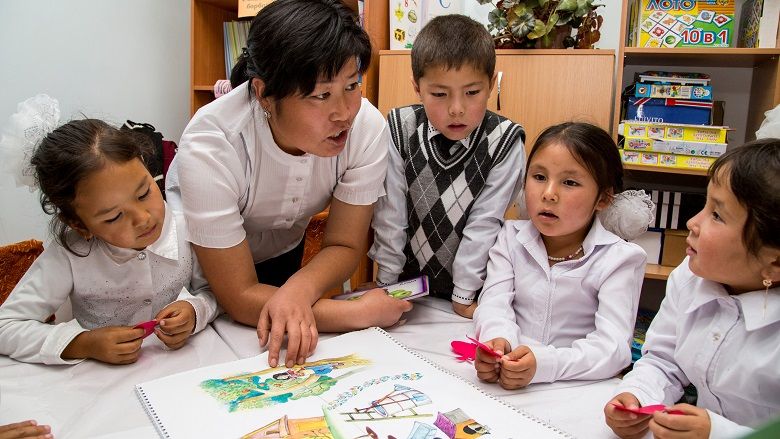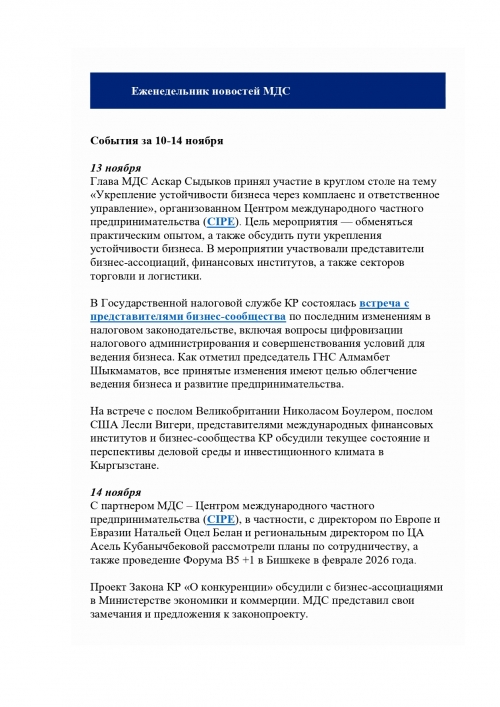Analysis /
Articles /
Investing today for a brighter future tomorrow
In light of the technological revolution we are witnessing today, the promise of education is becoming even more important, Lilia Burunciuc, World Bank Regional Director for Central Asia believes.
A young man sitting next to me on a recent flight from Almaty to Dushanbe told me, “I regret that I did not get a better education. I could have had a better job.” He is one of many Central Asian labor migrants doing low-skilled work in neighboring countries. He continued, “I’m telling my brothers and sisters to study hard if they want to have a better life.”
It was an important reminder about the responsibility we have as a society to ensure that young people like him get the education they deserve.
In light of the technological revolution we are witnessing today, the promise of education is becoming even more important. Emergence of robotics, autonomous transport, artificial intelligence and machine learning will transform the way we live, the way we work, and the skills we will need for work. Some jobs will disappear and some that don’t even exist today will become commonplace. What is certain is that education will be critical to succeed in the new reality.

While Central Asian countries inherited high-levels of adult literacy and education attainment from the Soviet period, the region has since experienced a visible decline in the quality of learning. Students here often lag behind in such basic skills as critical thinking, reasoning, and problem solving.
In the Kyrgyz Republic, for example, over 80% of students scored below the basic level of competency in math and reading according to PISA 2010 results. In Tajikistan, 77% of second graders could not meet the national benchmarks in reading fluency and comprehension. Even in Kazakhstan, the PISA 2012 results show that its students are one year of schooling behind their OECD peers. At the same time, Kazakh students are doing well on mathematics and science according to the TIMMS 2016 assessment. Uzbekistan and Turkmenistan have not participated in any international assessments, which makes it hard to benchmark learning outcomes.
Most Central Asian countries also face a huge gap in access to pre-school education: coverage ranges from 58% in Kazakhstan to as low as 12% in Tajikistan. While the Kyrgyz Republic and Uzbekistan are investing in expanding access, the majority of rural and remote communities still struggle to access pre-school education.
Our recent report The Changing Wealth of Nations shows that human capital - collection of knowledge, talents, skills and abilities of people - is one of the largest components of the wealth of a nation. It accounts for 68% of the wealth of a developed country and over 41% of a developing country.
By building and fostering human capital and investments in this area, countries in Central Asia can bolster their wealth and grow stronger.
In the recent World Development Report, Learning to Realize Education’s Promise, we identified key areas that can help tackle the challenges in education.
Start early, gain more
Early investments in nutrition, health, protection, and education are essential to produce good learning outcomes and strong human capital.
The foundations of brain architecture are set from the prenatal period to age 5. During this period the brain’s ability to learn from experience is at its highest, but this ability decreases with age. If this window is missed, skill-building becomes harder. Children who are poorly nourished, who are stunted, and who do not receive adequate parenting or stimulation before their fifth birthday, are likely to learn less at school and earn less as adults, perpetuating the cycle of poverty across generations.
Evidence suggests that an additional dollar invested in quality nutrition and preschool programs will yield a return of between $6 and $17 dollars to the national economy. Thus, investing in human capital during the first years of a child’s life is both the most cost effective and equitable investment governments can make.
Teachers matter most
The quality of teachers is the single most important factor contributing to learning outcomes. For example, in the US, replacing a low-quality teacher with an average one can add US$ 250,000 to a child’s lifetime income.
In most countries in Central Asia, governments struggle to recruit teachers. Relatively low salaries and limited professional development opportunities make teaching an unappealing career path. Teacher training is not customized to their specific needs and to the needs of the economy. This all leads to a lower quality of teaching – and consequently to lower learning outcomes for students.
In the Kyrgyz Republic, recent efforts to introduce classroom observation and feedback mechanisms on teacher performance offer some promise. But wider reforms in teacher education and professional development remain critical.
Measurement is key
If you don’t know that you have a problem, you are not likely to resolve it. Therefore, well-designed student assessments are important and can help guide teachers and students, improve management of education systems, and focus greater policy attention on learning.
National assessment systems in Central Asia need improvements. While Kazakhstan and the Kyrgyz Republic participate in international assessments like PISA, TIMMS and PIAAC, the other Central Asian counties do not. As such, both countries are missing an important opportunity to benchmark their learning outcomes and develop stronger national systems. Without assessment, countries will not find out whether teaching is producing the needed learning outcomes.
Focus on results
Countries in Central Asia spend, on average, about 15-20% of government expenditure on education, which is generally on par with the OECD average. Yet, the outcomes are far less equitable, which means that there is a need to use funds more efficiently to ensure better learning outcomes.
Evidence from around the world shows that education standards can improve dramatically if countries make “learning for all” a national priority. South Korea is one such example. From a war-torn country with very low literacy rates in the 1950s, South Korea managed to achieve universal enrollment by 1995 in high-quality education through to secondary school. Today, the country’s young people perform at the highest levels in international learning assessments.
As countries prepare for a more technologically advanced and digitized global economy, which will require news skills and significantly higher levels of human capital, the countries of Central Asia have an opportunity to overcome the challenges in their education systems and equip their young generations with the knowledge and skills needed to succeed in this rapidly changing world.
By Lilia Burunciuc, World Bank Regional Director for Central Asia
Link: http://blogs.worldbank.org/europeandcentralasia/investing-today-brighter-future-tomorrow




























